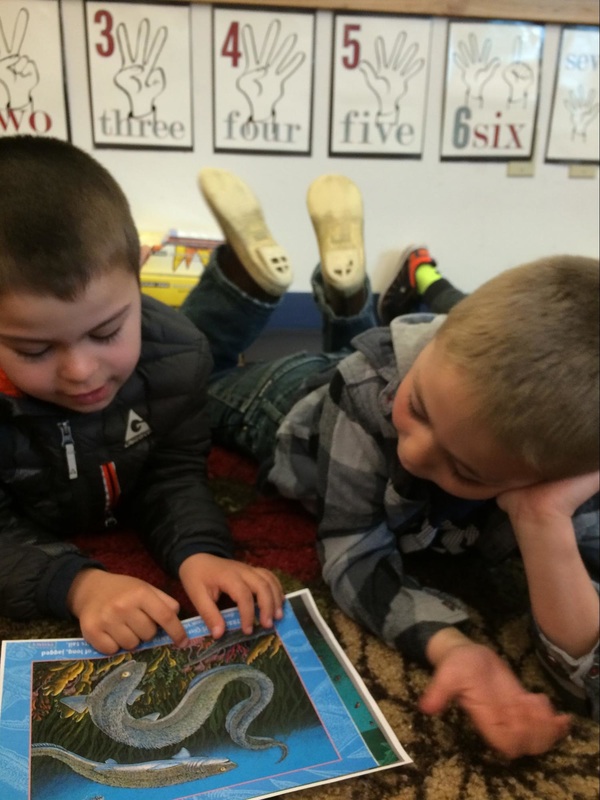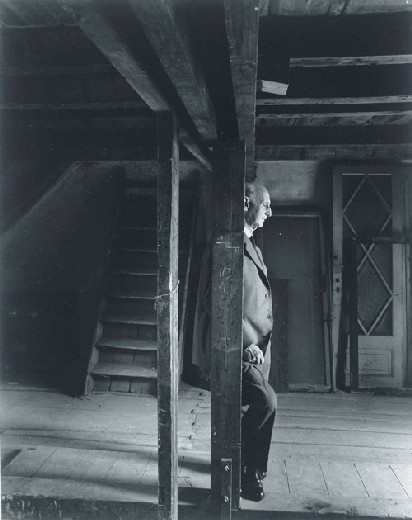|
by Maura Selenak Harborview Elementary, Kindergarten I learned a routine called Pass the Portrait at a recent inservice with Melanie Rick, an instructor from the Kennedy Center for the Performing Arts. To play Pass the Portrait, students are seated in a circle, facing a partner. Before beginning, students must show the place between them where they will be placing the piece of art (this is an important step because it helps avoid conflicts). In the game, students are taught how to “read” a portrait by discussing things like facial expression, gesture, and focal point. The teacher places a printed portrait in the predesignated spot between each pair of students. The students have one minute to discuss the picture before the teacher starts counting down aloud- “10, 9, 8, 7, 6, 5, 4, 3, 2, 1, pass….the….portrait….!” The expectation is that students will wrap up their discussion by the time the teacher gets to 1, then will pass the portrait to the next pair by the time she finishes saying “pass the portrait”. The teacher moves amongst the students during the discussions, pulling out ideas and writing them on the board to reference later. This routine quickly gets students engaged- there is art in their hands!- and discussing with one another. I used Pass the Portrait to teach my kindergartners the routine and expectations for the game- they are seated, they are talking in quiet voices, they are expected to work with anyone in the class, they finish their conversation by the time I get to 1, and they pass the portrait clockwise. After teaching them this routine, I realized the sky was the limit! For example, we used the routine at the beginning of the Ray Troll art kit. I printed out 15 images of Ray Troll Fish. We began the lesson by looking at one piece of exemplar art on the board and identified colors, lines, patterns, and shapes. We were then ready to play “Pass the Artwork”. We used the exact same routine as Pass the Portrait, except students were looking at Ray Troll images, and they were picking out colors, lines, patterns, and shapes. The discussions were rich, and when it came time for students to create their own artwork, they were inspired and had concrete ideas of what kinds of lines, shapes, colors, and patterns they could use. In another instance, I used the Pass the Portrait routine at the beginning of the Rainbow Flower Garden Art Kit. The kit comes with many colorful artificial flowers. We used used exemplar art to identify flower parts before students played “Pass the Flower” with the artificial flowers. The objective for their discussions during Pass the Flower was to identify flower parts (stem, leaves, flower) and describe the flower (it has 5 petals, it is colorful, it has one long green leaf, etc.)
0 Comments
by Tracy Goldsmith Dzantik'i Heeni Middle School My 8th grade Language Arts class students studied the Holocaust. They were assigned different Holocaust novels to read and they participated in literature circles using those novels. We started the unit by using the Step Inside Artful Thinking Routine with this image; This is an image of Otto Frank, on the opening day of the Anne Frank House as a museum in Amsterdam. I asked students to stand up and quietly place themselves into the same position as the person in this portrait. While they quietly, stood in position looking at the image, I asked them to image what this person might be thinking or feeling. I wanted them to come up with a story about this picture and this man. They stood silently for one minute and then they had to write a journal entry answering the same questions. Some student responses are below:
The unit involved many different activities related to the Holocaust. One resource we used extensively was the United States Holocaust Memorial Museum website (www.ushmm.org). To extend the Artful Thinking routine of “Step Inside,” the students were assigned a portrait and first person narrative project. They started by finding one victim or survivor whose story they wanted to explore more on the USHMM website. There is a link on the website that shows ID cards with pictures and information about victims and survivors. After finding a person that they wanted to study more, students had to read the information about them and then turn that into a first person narrative. This first person narrative would be read out loud to the class later in the unit. The activity of writing in first person really stretched their understanding of what an individual was experiencing during the Holocaust. Being able to read it out loud to an audience, made that story come alive. Many students were emotionally touched by the narrative readings.
|
ArtStoriesA collection of JSD teachers' arts integration classroom experiences Categories
All
|
|
|
Artful Teaching is a collaborative project of the Juneau School District, University of Alaska Southeast, and the Juneau Arts and Humanities Council.
|





 RSS Feed
RSS Feed